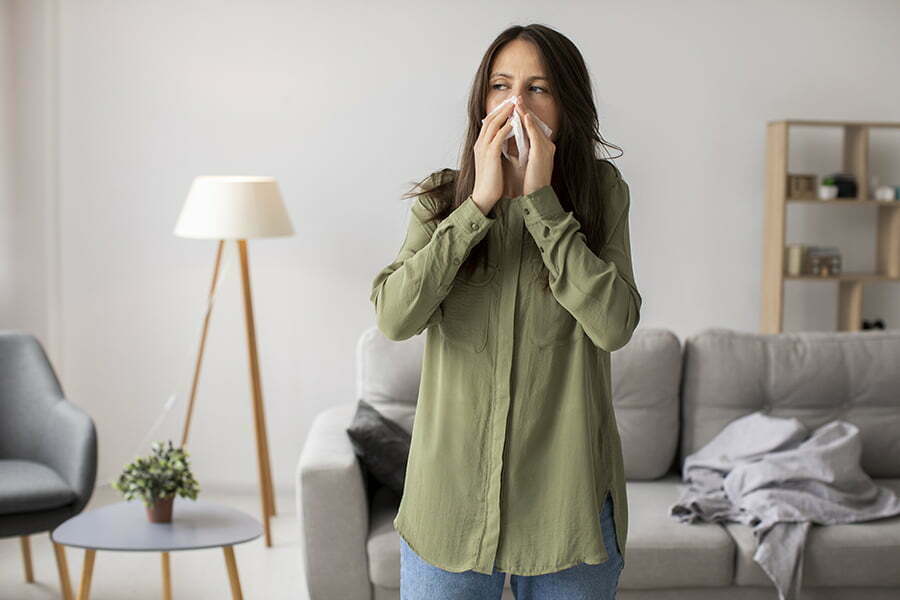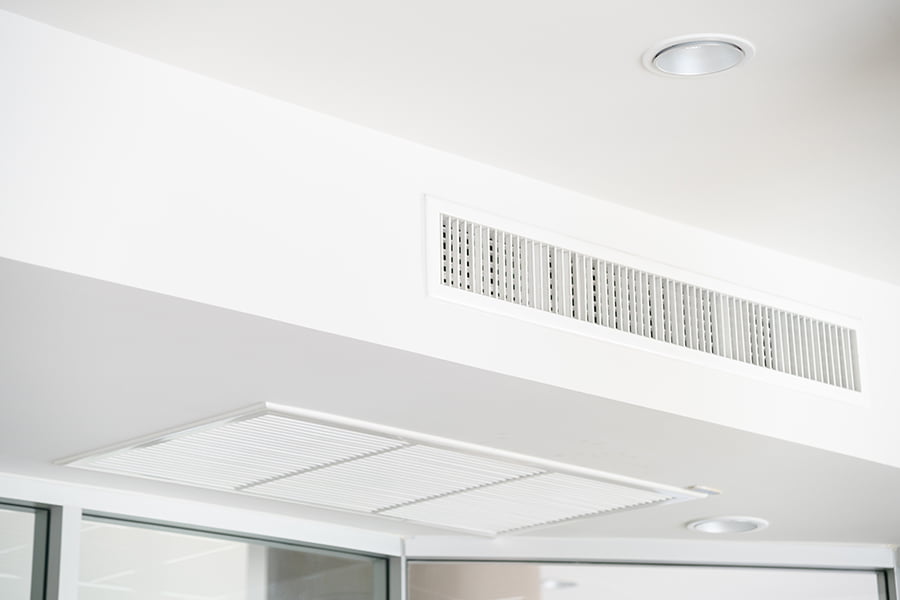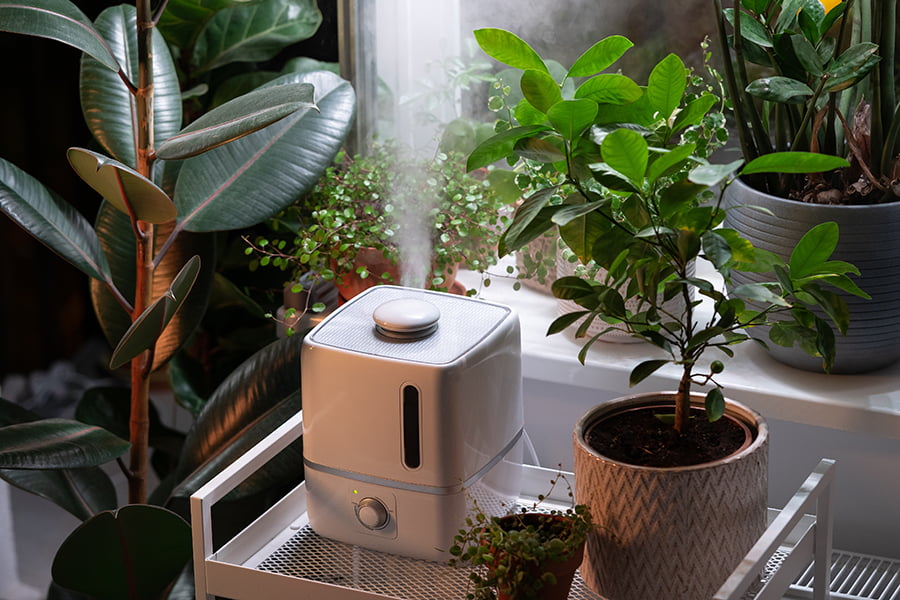We’ll explore how outdoor allergens can affect the air quality in your home and share effective strategies for minimizing their impact.
As I sat on my front porch, taking in the fresh air and enjoying the warm sunshine, I couldn’t help but notice the sudden itchiness in my eyes and the tickle in my throat. As someone who suffers from seasonal allergies, I knew exactly what was happening – outdoor allergens were making their way into my home.
Many of us are unaware of just how much our indoor air quality is impacted by outdoor allergens such as pollen, dust, and mold spores. These microscopic particles can easily find their way into our homes through open windows or doors or even hitch a ride on our clothing or pets.
But fear not! There are steps we can take to minimize their effects and improve the overall air quality within our homes. So sit back, grab a cup of tea (or allergy medication), and let’s dive into how we can combat those pesky outdoor allergens.
The Invisible Invaders: Outdoor Allergens

Outdoor allergens are a common problem for many homeowners and can have a significant impact on indoor air quality.
Pollen from trees, grasses, and weeds is one of the most common outdoor allergens that find their way indoors. These tiny particles can easily attach themselves to clothing or pets and be brought inside without us even realizing it.
Dust mites are another culprit that thrive in warm weather conditions and can cause allergic reactions such as sneezing or coughing. Mold spores also pose a threat during humid months when moisture levels increase outdoors.
They grow rapidly in damp areas like basements or bathrooms but can quickly spread throughout the house if left unchecked. The good news is there are steps we can take to minimize the effects of these invisible invaders on our indoor air quality.
By being proactive about reducing exposure to outdoor allergens, we’ll breathe easier knowing our homes provide clean air for ourselves and loved ones alike!
How Outdoor Allergens Affect Indoor Air Quality

As I retreated back into my home, seeking refuge from the outdoor allergens wreaking havoc on my senses, I couldn’t help but wonder just how much these tiny particles were impacting the air quality within my home. It turns out that outdoor allergens can have a significant impact on indoor air quality.
Pollen is one of the most common outdoor allergens and can easily find its way indoors through open windows or doors. Once inside, it can settle onto surfaces such as furniture and flooring or become airborne again when disturbed by movement or airflow.
Dust is another culprit that often originates outdoors before making its way inside our homes. This pesky particle contains a variety of irritants such as pet dander, mold spores, and even insect waste – all of which contribute to poor indoor air quality.
Mold spores are also commonly found outdoors but thrive in damp environments like basements or bathrooms once they make their way indoors. These microscopic fungi release spores into the air which can cause allergic reactions in some individuals.
It’s clear that outdoor allergens pose a threat to our indoor air quality – but what steps can we take to minimize their effects?
Pollen, Mold, and Dust: Common Culprits of Allergy Woes

Pollen, mold, and dust are the most common outdoor allergens that can wreak havoc on our indoor air quality. Pollen is a fine powder produced by plants during their reproductive cycle. It’s lightweight and easily carried by the wind or attached to clothing or pets.
Mold spores thrive in damp environments such as basements or bathrooms and can quickly spread throughout a home if left unchecked. Dust is made up of tiny particles from various sources such as soil, pollen, pet dander, skin cells shed by humans – you name it! All three of these culprits have one thing in common: they’re microscopic enough to enter our homes undetected through open windows or doors without us even realizing it.
But don’t worry! There are steps we can take to minimize their effects on our indoor air quality so we can breathe easy at home.
The Sneaky Pathways: How Allergens Enter Your Home

It turns out that these microscopic particles have a few sneaky pathways to enter our homes. One common pathway is through open windows and doors. While it’s tempting to let in fresh air during warmer months or when cooking in the kitchen, this can also invite pollen and other allergens inside.
Another pathway is through our clothing and pets. When we spend time outdoors, we unknowingly collect these particles on our clothes or shoes which then make their way into our homes once we take them off.
Our furry friends can also bring in outdoor allergens from their fur after playing outside.
Lastly, indoor plants may seem like a great addition to any home decor but they can actually contribute to poor indoor air quality if not properly cared for as they too attract dust and mold spores.
By being aware of these sneaky pathways for outdoor allergen entryways into your home you will be better equipped at minimizing its impact on your indoor air quality!
Battle Against the Elements: Weather’s Role in Air Quality

It’s no secret that certain weather conditions can exacerbate allergies and impact air quality.
For example, windy days can stir up pollen and dust particles, while rainy days can cause mold spores to thrive. But it’s not just about avoiding these types of weather conditions altogether – we also need to be proactive in our efforts to minimize their effects on indoor air quality.
This includes regularly cleaning our homes (especially areas prone to collecting dust), using high-quality air filters in HVAC systems or portable air purifiers, and keeping windows closed during peak allergy seasons.
Breathe Easy With Proper Ventilation Techniques

One of the most effective ways to minimize the impact of outdoor allergens on indoor air quality is through proper ventilation techniques.
Proper ventilation helps to circulate fresh air throughout your home and remove stale or polluted air. This can help reduce the concentration of outdoor allergens inside your home and improve overall indoor air quality.
One simple way to improve ventilation is by opening windows and doors when weather permits. However, this may not always be practical or safe depending on where you live or if you have pets who could escape.
Another option is investing in a whole-house fan or an energy recovery ventilator (ERV) which can bring fresh outside air into your home while also removing stale indoor air. These systems are designed specifically for improving indoor airflow and reducing pollutants such as pollen, dust mites, mold spores among others from entering our homes.
By implementing proper ventilation techniques like these we can breathe easy knowing that we’re doing everything possible to keep our homes free from harmful airborne particles caused by seasonal allergies!
Filtration Matters: Choosing the Right Air Purifier

One of the most effective ways to combat these pesky particles is by investing in an air purifier. But with so many options on the market, how do you choose the right one?
It all comes down to filtration. Look for a purifier that uses HEPA (High-Efficiency Particulate Air) filters as they are designed specifically for capturing small particles like pollen and dust mites.
Consider purchasing a unit with activated carbon filters which can help eliminate odors and chemicals from indoor air. And don’t forget about size – make sure you choose an appropriately sized unit based on your room’s square footage for maximum effectiveness.
By choosing the right air purifier and regularly replacing its filters, we can significantly reduce our exposure to outdoor allergens within our homes and breathe easier all season long.
Regular Cleaning Routines to Keep Outdoors Out

One of the most effective ways to minimize the impact of outdoor allergens on indoor air quality is by implementing a regular cleaning routine.
I started by making sure that all windows and doors were closed during high pollen count days. This helped keep out any unwanted particles from entering my home.
Next, I made sure to vacuum regularly using a HEPA filter which captures even the smallest particles such as dust mites and pet dander. Washing bedding in hot water once a week can help eliminate any allergens that may have accumulated over time.
And don’t forget about your furry friends! Regular grooming and bathing can also help reduce their contribution to indoor allergen levels. By incorporating these simple cleaning routines into our daily lives, we can significantly improve our indoor air quality and reduce exposure to outdoor allergens – allowing us all breathe easier at home!
Plants As Natural Allies for Cleaner Indoor Air

Plants can act as natural allies in the fight against outdoor allergens. Not only do they add a touch of greenery and beauty to our homes, but certain types of plants have been shown to purify the air by removing harmful toxins and pollutants.
Plants such as spider plants, peace lilies, and snake plants are known for their ability to filter out common household pollutants like formaldehyde and benzene. These chemicals can be found in everyday items such as cleaning products or furniture materials.
By incorporating these natural air purifiers into our homes, we not only reduce the impact of outdoor allergens but also create a healthier living environment overall. So next time you’re at your local nursery or garden center, consider picking up some new plant friends for your home’s clean-air team!
Sealing Gaps and Cracks to Minimize Exposure

One of the most effective ways to minimize exposure to outdoor allergens is by sealing gaps and cracks in your home. As I sat on my porch, feeling the effects of pollen and dust, I realized that my windows were not properly sealed.
This allowed for these tiny particles to easily make their way into my home. Sealing gaps and cracks can be done using weatherstripping or caulking around doors, windows, vents, and other openings in your home’s exterior.
By doing so, you create a barrier between the outdoors and indoors which helps prevent allergens from entering. It’s important to note that while sealing up your home may help reduce exposure to outdoor allergens it can also lead to poor indoor air quality if proper ventilation isn’t maintained.
Be sure that there is adequate airflow throughout your living space by opening windows when possible or investing in an air purifier with a HEPA filter. By taking steps like sealing gaps and maintaining proper ventilation we can greatly improve our indoor air quality even during allergy season!
Read Also
- Air Quality: Understanding Its Importance and Impact on Health
- How Outdoor Air Quality Affects Indoor Air Quality in Your Home
- How to Reduce the Amount of Pollen in Your Home’s Air
- Common Allergens Found in Homes and How to Reduce Their Presence
- The Role of Air Sealing in Improving Indoor Air Quality and Energy Efficiency